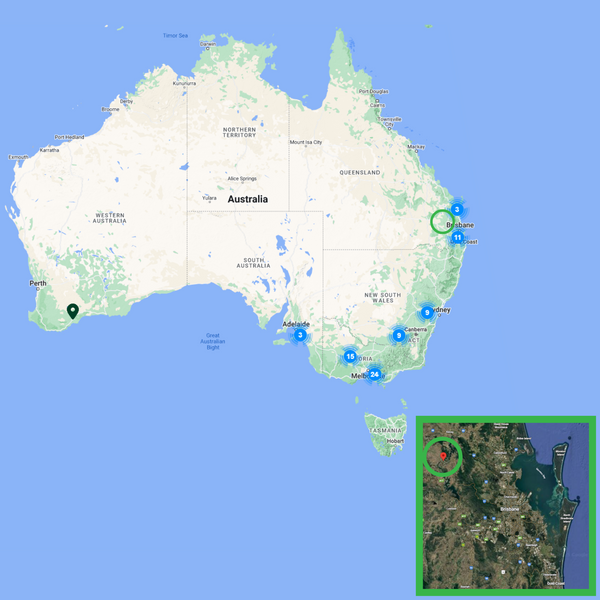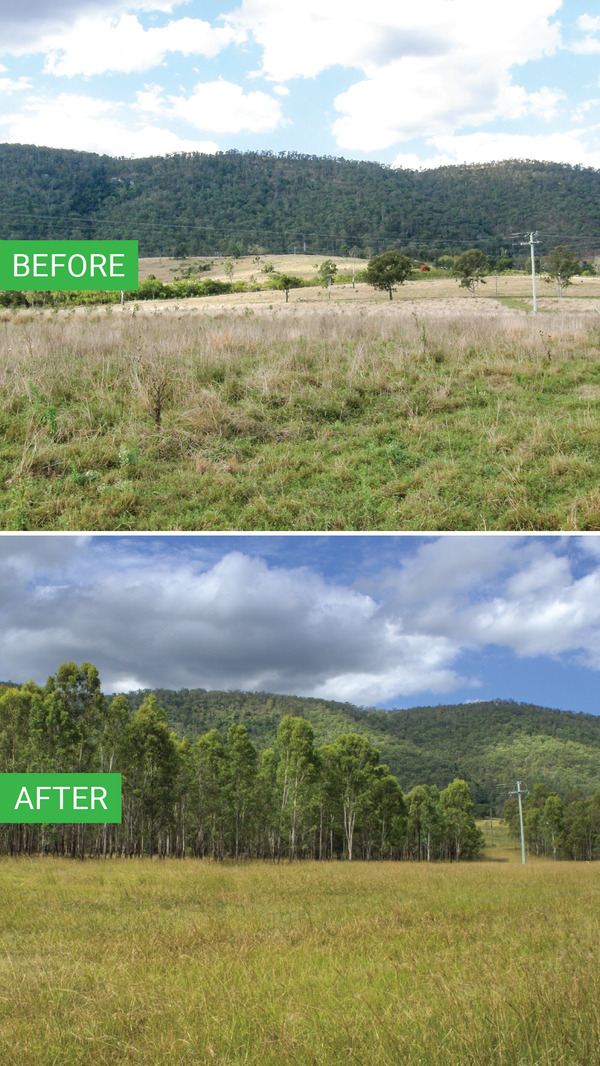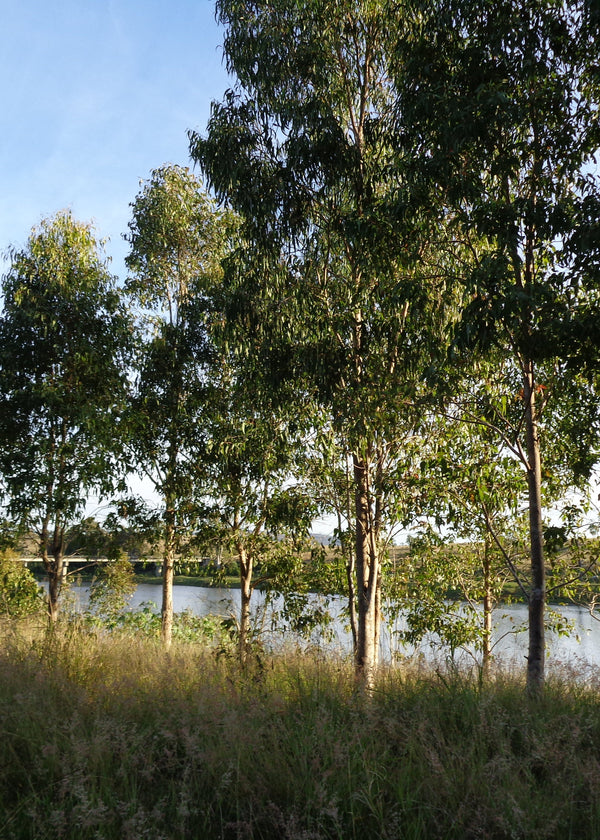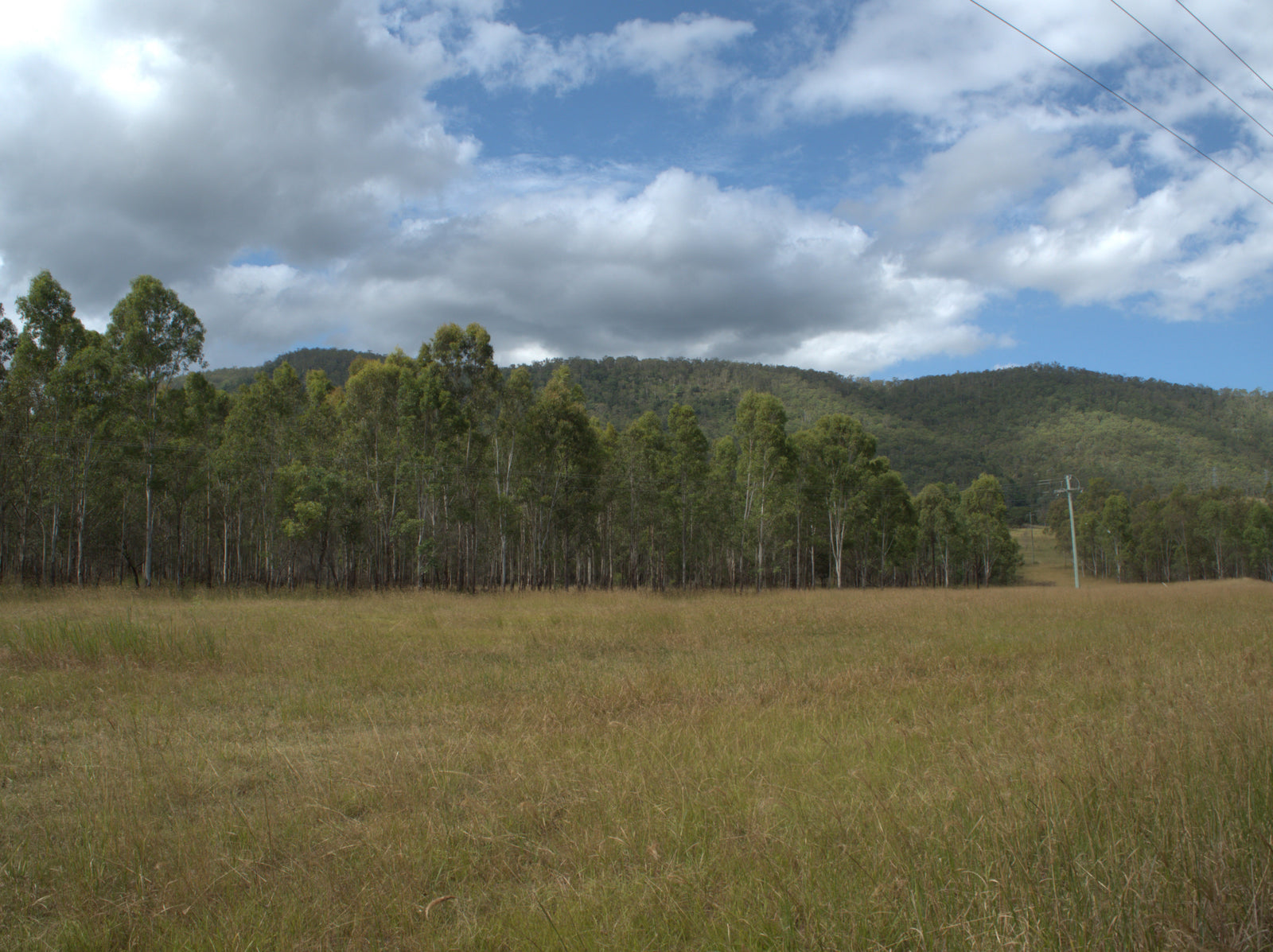Removing Carbon, Stabilising Riverbanks And Improving Water Quality
Greenfleet is returning this heavily grazed farmland back to open forest. Located on Waka Waka Country in Southeast Queensland, this project is delivering long term environmental benefits by removing carbon from the atmosphere and improving soil quality.
Part of the Brisbane River catchment area, the O'Sheas Crossing reforestation project is upstream from Wivenhoe Dam, southeast Queensland's biggest water supply storage. By planting the species native to the local area, we are growing a forest that is helping the soil structure to recover, reducing the amount of sediment and nutrients flowing directly into the dam while expanding habitat for wildlife.

Location & Map
This 27-hectare site is east of Esk in Queensland’s Somerset region, known for its warm, temperate climate and high rainfall. The forest is growing alongside the Brisbane River which feeds into the Wivenhoe Dam. It is extending the riparian ecological community and expanding habitat for wildlife in the mature forest of nearby Deer Reserve National Park.
This is one of many native reforestation projects that Greenfleet has undertaken in Queensland since 1997. To see where some of our other projects are growing, you can explore our forest map here.

Revegetation Approach & Species Selection
Prior to farming and grazing, the site was originally open forest, with forest red gum (Eucalyptus tereticornis) being the dominant species. Greenfleet has reintroduced this species to the area, along with a selection of flowering species such as crow's ash (Flindersia australis), pink bloodwood (Corymbia intermedia) and brush box (Lophostemon confertus).
As it grows, this project is restoring the previous riverine narrow fringing woodland ecosystem which runs along the edge of waterways, or riparian areas. By reestablishing native species, these trees are stabilising the riverbank and preventing water run-off, which was leading to excess nutrients in the water which allowed algal blooms to overgrow in the adjacent Brisbane River. By creating biodiversity, these forests are more resilient to extreme weather conditions, which are increasingly exacerbated due to climate change.
Drought tolerant species are dominant within the canopy planted at O’Sheas Crossing. Nearly 20 years on, Greenfleet’s revegetation work is showing excellent progress, with many trees over 15 metres tall. Species like the eucalypts and acacias are providing habitat and food sources to wildlife returning to the area. The site even shows evidence of natural regeneration which is a great indicator of an ecosystem’s ability to self-recover.
Pictured: These images were taken 18 years apart, the Before in 2007 and the After in 2025.

Wildlife Habitat Restoration
O’Sheas Crossing is growing to extend wildlife habitat from Deer Reserve National Park, 20 kilometers to the north.
The region is known to support koalas, which are listed as endangered in Queensland. By planting their preferred food tree, the forest red gum (Eucalyptus tereticornis), we are restoring habitat for these iconic herbivorous marsupials.
The many flowering trees at O’Sheas Crossing are providing habitat for a variety of insects, providing feeding opportunities for many locally native birds and gliders. This includes the white-throated needletail which is listed as vulnerable in Queensland.
Other vulnerable birds include migratory sharp-tailed sandpipers and the Latham's snipe. By restoring trees next to the river, this forest will provide food and habitat as they travel annually to their breeding locations.
This habitat may also support smaller gliders and possums known to the region, as well as bats, wallabies, kangaroos, bettongs, bandicoots, echidnas, and many varieties of reptiles. The forest is providing pollen, nectar and leaves as food for a wide number of species. It is also creating woody debris in the form of bark, dead leaves, and small branches for food and habitat for ground-foraging creatures.
Climate Action
Greenfleet uses the Full Carbon Accounting Model (FullCAM) to measure the carbon uptake at each of our revegetation projects.
Over its lifetime, the forest at O’Sheas Crossing will remove over 18,660 tonnes of carbon from the atmosphere, this is the equivalent of what almost 4,340 average vehicles emit on Australia’s roads in a single year.
Location Size
27 hectares east of Esk, Queensland
Planting Dates
2007
Species
- Red ash (Alphitonia excels)
- Hoop pine (Araucaria cunninghamii)
- Lemon-scented gum (Corymbia citriodora)
- Pink bloodwood (Corymbia intermedia)
- Moreton bay ash (Corymbia tessellaris)
- Narrow-leaved ironbark (Eucalyptus crebra)
- Grey box (Eucalyptus moluccana)
- Grey ironbark (Eucalyptus siderophloia)
- Forest red gum (Eucalyptus tereticornis)
- Crow's ash (Flindersia australis)
- Yellowwood (Flindersia xanthoxyla)
- Brush box (Lophostemon confertus)
- Turpentine (Syncarpia glomulifera)


